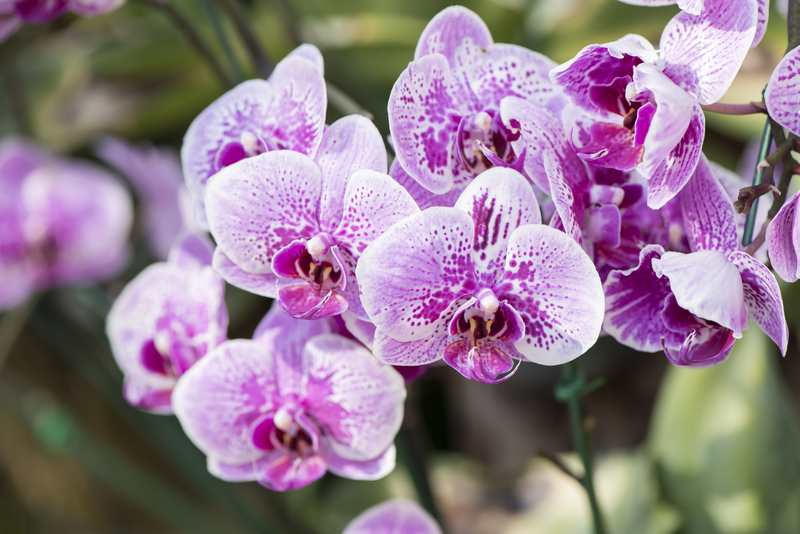Mastering the Art of Hedge Trimming with Unique Shapes
Posted on 22/09/2025
Mastering the Art of Hedge Trimming with Unique Shapes
Hedge trimming is not just a gardening chore--it's an opportunity to transform your landscape into a living piece of art. Mastering the art of hedge trimming with unique shapes takes creativity, skill, and a touch of patience. Whether you're aiming to create dramatic animal topiaries, symmetrical geometric forms, or whimsical patterns, this comprehensive guide will equip you with the knowledge and tips needed to elevate your hedges from ordinary to extraordinary.
Why Create Unique Hedge Shapes?
Beautifully sculpted hedges do more than enhance curb appeal--they reflect your personality and add value to your property. Shaped hedges can serve as green sculptures, privacy screens, or conversation pieces. Let's dive into the fascinating world of artistic hedge trimming and discover why unique shapes are worthwhile:
- Visual Drama: Shapes like spirals, balls, and animals create a focal point in the garden.
- Personal Expression: Each trimmed hedge is a reflection of your style and creativity.
- Increased Property Value: Well-maintained and artful landscaping boosts real estate value.
- Functional Beauty: Shaped hedges can serve as privacy screens, windbreaks, or natural fences.

Essential Tools for Hedge Trimming Mastery
To achieve precise and intricate shapes, an arsenal of quality tools is essential. Here's what you'll need to master unique forms in hedge design:
- Hedge Shears: For straight lines and large surface areas.
- Topiary Shears: Small, sharp, and perfect for intricate details.
- Electric or Battery-Powered Trimmers: Provide speed and uniformity on extensive hedges.
- String, Stakes, and Templates: Help guide straight or complex shapes.
- Ladder or Step Stool: Reach higher portions safely.
- Protective Gear: Gloves, goggles, and long sleeves prevent scratches and debris injuries.
Pro Tip:
Regularly sharpen your tools to guarantee clean, precise cuts--dull blades bruise stems, making plants susceptible to disease.
Best Plants for Shaping and Topiary Art
Not all shrubs are suited to the demands of shaping. To truly master hedge shaping with unique forms, choose plants that are flexible, fast-growing, and provide dense foliage. Here are some top choices:
- Boxwood (Buxus): The gold standard for classic shapes and detailed topiaries.
- Yew (Taxus): Hardy, evergreen, and tolerant of heavy pruning.
- Privet (Ligustrum): Fast-growing and inexpensive--ideal for tight budgets.
- Holly (Ilex): Shiny leaves and berries make for dramatic, formal shapes.
- Arborvitae (Thuja): Tall, dense, and lush--perfect for spirals and columns.
- Japanese Holly (Ilex crenata): Compact growth and small leaves for detailed patterns.
The Secrets of Shaping: Techniques for Unique Hedge Designs
Understanding Growth Habits
Before snipping away, study how your hedge plant grows. Apply the following principles:
- Prune New Growth: Best results come from shaping tender, new branches.
- Work in Stages: Gradually refine the form over several seasons rather than forcing drastic changes in a single session.
- Keep the Base Wider: Shape the lower section broader than the top for sunlight exposure and healthy growth.
Step-by-Step Guide to Unique Hedge Trimming
-
Plan Your Shape: Sketch or visualize the desired outcome.
- Geometric? Go for cubes, spheres, or pyramids for timeless elegance.
- Whimsical? Think animals, playful waves, or abstract art.
- Prepare the Site: Remove obstructions and spread a drop cloth to collect clippings.
- Mark the Outline: Use string, bamboo canes, or cardboard templates to mark major lines and shapes.
-
Begin with Coarse Shaping:
- Trim large volumes first using hedge shears or an electric trimmer.
- Stay outside your marked lines to allow for detailed trimming later.
- Refine the Details: Switch to topiary shears for the fine work. Gradually work your way to the finished shape.
- Step Back Frequently: Examine your work from different vantage points--symmetry matters!
- Final Touches: Smooth out rough spots, clean up debris, and mist the foliage for a finished look.
Top 5 Unique Hedge Shapes to Try
- Spirals: Perfect for tall, narrow evergreens--dramatic and modern.
- Animal Topiaries: Showcase creativity and conversation-starting artistry.
- Balls and Domes: Classic and low-maintenance, ideal for symmetrical designs.
- Archways: Frame pathways or create magical garden entrances with clipped arches.
- Wave Patterns: Gentle, flowing curves for a softer, organic feel.
With these unique hedge ideas, your landscape will not only stand out but also display your horticultural finesse.
Common Mistakes in Artistic Hedge Shaping (and How to Avoid Them)
- Pruning Too Much at Once: Can stress or kill plants--always shape gradually.
- Using the Wrong Tools: Electric trimmers might shred leaves on small, delicate shapes.
- Neglecting Plant Health: Water, fertilize, and monitor for pests after heavy trimming.
- Ignoring Timing: Most hedge shaping is best done in late spring or early summer, after initial growth spurts.
- Forgetting to Step Back: Up-close work can cause uneven or lopsided results. Inspect your hedge from multiple angles often.
Expert Tips for Mastering Unique Hedge Trimming
- Learn from Professionals: Visit botanical gardens and estate landscapes for inspiration and technique study.
- Photograph Your Progress: Images help track improvement and spot shaping flaws.
- Experiment with Templates: Custom cardboard or wire forms can accelerate learning complex shapes.
- Be Patient: Building up (and maintaining) a topiary or geometric form is a long-term commitment.
- Maintain Regularly: Light, frequent trims are better than drastic annual pruning for well-defined edges.
Did You Know?
The oldest known topiary, dating back to ancient Rome, was designed as hedge sculptures in the gardens of Pliny the Younger!
Caring for Your Sculpted Hedges
Once you have mastered the art of unique hedge trimming, maintaining the beauty of your designs is essential. Follow these best practices:
- Water Consistently: Especially during dry spells and after major pruning sessions.
- Fertilize in Early Spring: Use slow-release, balanced fertilizer to encourage steady growth.
- Watch for Pests and Disease: Regular inspection keeps foliage lush and green.
- Mulch Around Roots: Suppresses weeds, retains moisture, and protects against weather extremes.
- Prune at the Right Time: Avoid shaping during high heat; early morning or evening is optimal.
When to Call a Professional?
Some hedge designs--like giant animal topiaries or multi-level geometric walls--require advanced skills and specialized tools. Don't hesitate to seek a professional topiary artist or landscaper for intricate projects or plant health concerns.
FAQs About Artistic Hedge Shaping
- How often should I trim my shaped hedge?
For detailed forms, trim lightly every 4-6 weeks during the growing season. Larger forms can go 2-3 times per year. - Will shaping hedges harm my plants?
Not if done properly. Always use sharp tools and avoid cutting into old wood or during periods of drought/heat. - Can I shape newly planted hedges?
Allow newly-planted hedges a full year to grow and establish, then begin light shaping. - Do I need special training to create animal shapes?
Skill comes with practice, but working with wire frames or simple starting shapes can help amateurs achieve basic animal forms.

Inspiring Examples from Around the World
Some of the world's most stunning landscapes feature extraordinary hedge designs. Consider these examples:
- Levens Hall (UK): Home to some of the oldest and grandest topiary gardens globally, with elaborate peacocks and chess pieces.
- Chateau de Villandry (France): Renaissance-style knot gardens and geometric parterres.
- Longwood Gardens (USA): Playful spirals, cones, and animal shapes showcase American creativity in hedge art.
Let global gardens ignite your imagination as you refine your own living masterpieces at home.
Conclusion: Unlock Your Creative Potential in Hedge Trimming
Mastering the art of hedge shaping with unique forms is a rewarding way to add personality and polish to your garden. With the right tools, plant choices, and refined techniques, anyone can elevate their landscape from standard to sensational. Whether you favor manicured globes or playful animal topiaries, the journey of hedge trimming artistry is one of discovery, growth, and creative satisfaction.
Ready to transform your outdoor space? Start practicing today and soon you'll be the talk of the neighborhood, admired for your unique hedge designs and creative landscaping prowess.
Additional Resources
- RHS Guide to Topiary
- Garden Design: How to Prune Hedges
- Better Homes & Gardens: Shaping Shrubs and Hedges
Happy trimming--and may your living sculptures thrive!

